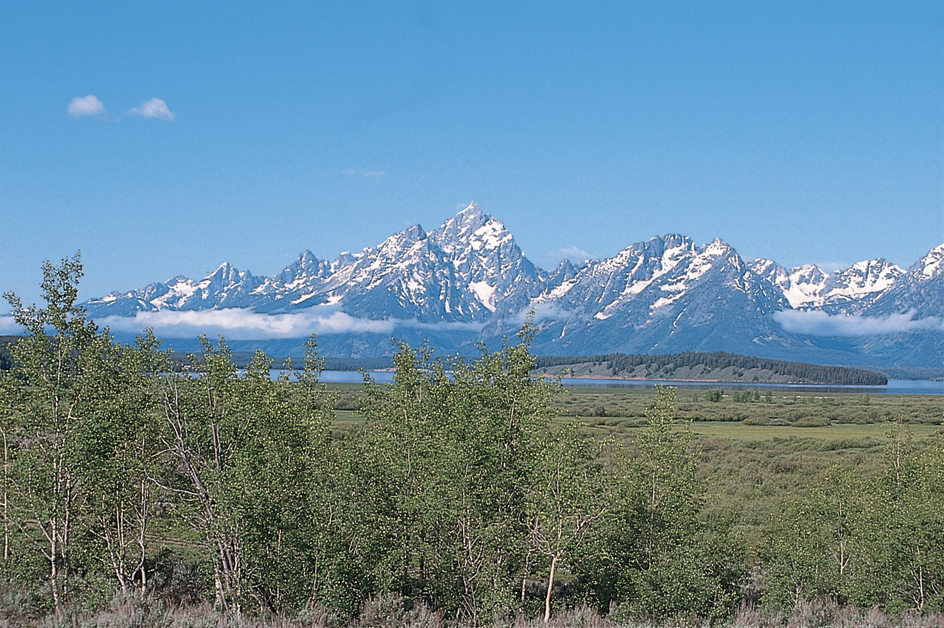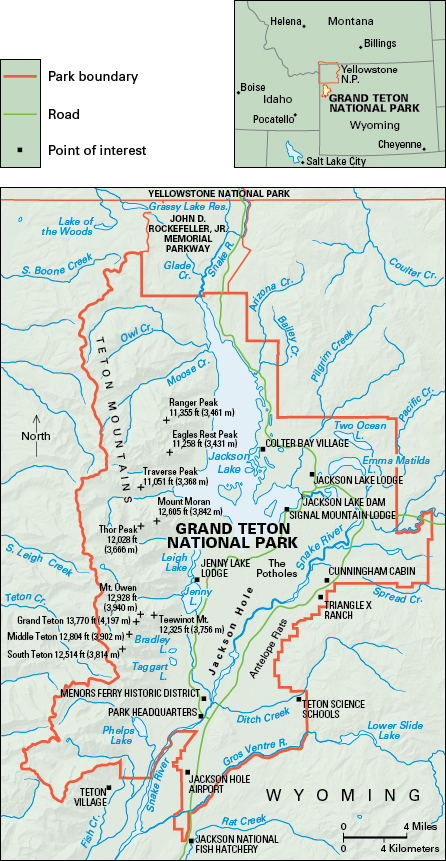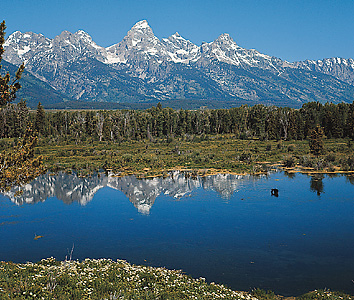Grand Teton << TEE ton >> National Park is an area of mountains, lakes, and forests in northwestern Wyoming, 7 miles (11 kilometers) south of Yellowstone National Park . The John D. Rockefeller, Jr. Memorial Parkway links the two parks. For the area of Grand Teton National Park, see National Park System (table: National parks) . The Teton Mountains rise 7,000 feet (2,100 meters) from the level floor of Jackson Hole , a valley in the park. Many people consider them to be the most majestic mountains in North America. The highest peak is Grand Teton (13,770 feet, or 4,197 meters, above sea level). It resembles the Matterhorn in Switzerland. A number of the park’s other mountain peaks rise higher than 12,000 feet (3,660 meters) above sea level.

The Teton Mountains were formed when underground pressure caused two blocks of Earth’s crust to shift. One block pushed upward to form the Teton Range, while the other block sank to form Jackson Hole. This shifting took place over millions of years. Because of the way the mountains formed, no foothills hide the jagged peaks and broad canyons of the Tetons.

At the eastern base of the Teton Range, melting glaciers formed a series of large lakes. Jackson Lake, the largest of these lakes, was partially artificially created. A dam at the place where the Snake River flows out of the lake has raised its level. Water from Jackson Lake is used for irrigation in Idaho. Other lakes in the park include Phelps, Taggart, Bradley, Jenny, and Leigh.

Most of the trees in Grand Teton National Park are evergreens. Elk, moose, mule deer, and black bear live in the forests. Buffaloes and coyotes roam Jackson Hole. Beavers live in the Snake River. The river also contains several species of trout, including the cutthroat trout, which is native to the region. The park also provides shelter for ospreys, bald eagles, and a number of other bird species.
Grand Teton National Park was created in 1929, after efforts to incorporate the area into Yellowstone National Park had failed. It was enlarged in 1950. In that year, Congress abolished nearby Jackson Hole National Monument, and most of its area was included in Grand Teton National Park.
